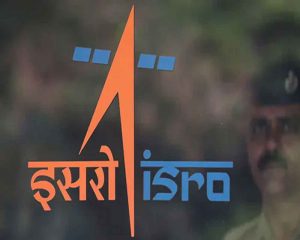 India’s Polar Satellite Launch Vehicle, PSLV-C47 will launch Cartosat-3 and 13 commercial nanosatellites into Sun Synchronous orbit from Satish Dhawan Space Centre (SDSC) SHAR, Sriharikota on 25th November. Cartosat-3 satellite is a third-generation agile advanced satellite having high-resolution imaging capability. This will be the 74th launch vehicle mission from SDSC SHAR, Sriharikota. PSLV-C47 is the 21st flight of PSLV in ‘XL’ configuration, that is with 6 solid strap-on motors. PSLV-C47 will also carry 13 commercial nanosatellites from the United States of America as part of a commercial arrangement with NewSpace India Limited (NSIL), Department of Space. India’s Polar Satellite Launch Vehicle, PSLV-C47 will launch Cartosat-3 and 13 commercial nanosatellites into Sun Synchronous orbit from Satish Dhawan Space Centre (SDSC) SHAR, Sriharikota on 25th November. Cartosat-3 satellite is a third-generation agile advanced satellite having high-resolution imaging capability. This will be the 74th launch vehicle mission from SDSC SHAR, Sriharikota. PSLV-C47 is the 21st flight of PSLV in ‘XL’ configuration, that is with 6 solid strap-on motors. PSLV-C47 will also carry 13 commercial nanosatellites from the United States of America as part of a commercial arrangement with NewSpace India Limited (NSIL), Department of Space. |
| Source: The News on AIR |
 National Aeronautics and Space Administration (NASA) has renamed a distant space rock Ultima Thule, to Arrokoth. It is the farthest cosmic body ever visited by a spacecraft, Arrokoth or “sky” is a name of the Native American Powhatan language following a significant backlash over the old name’s Nazi connotations. The name portrait the co-operation with Powhatan Tribal elders. National Aeronautics and Space Administration (NASA) has renamed a distant space rock Ultima Thule, to Arrokoth. It is the farthest cosmic body ever visited by a spacecraft, Arrokoth or “sky” is a name of the Native American Powhatan language following a significant backlash over the old name’s Nazi connotations. The name portrait the co-operation with Powhatan Tribal elders. |
| Source: The News18 |
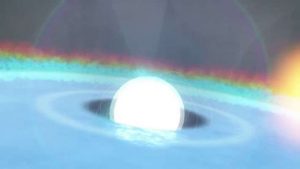 NASA has detected a massive thermonuclear explosion coming from outer space, caused by a massive thermonuclear flash on the surface of a pulsar. The crushed remains of a star that long ago exploded as a supernova. The explosion released as much energy in 20 seconds as the Sun does in nearly 10 days. NASA’s Neutron Star Interior Composition Explorer (NICER) telescope on the International Space Station (ISS) detected a sudden spike of X-rays on August 20, reports the US space agency. The X-ray burst, the brightest seen by NICER so far, came from an object named “J1808”. The observations reveal many phenomena that have never been seen together in a single burst. NASA has detected a massive thermonuclear explosion coming from outer space, caused by a massive thermonuclear flash on the surface of a pulsar. The crushed remains of a star that long ago exploded as a supernova. The explosion released as much energy in 20 seconds as the Sun does in nearly 10 days. NASA’s Neutron Star Interior Composition Explorer (NICER) telescope on the International Space Station (ISS) detected a sudden spike of X-rays on August 20, reports the US space agency. The X-ray burst, the brightest seen by NICER so far, came from an object named “J1808”. The observations reveal many phenomena that have never been seen together in a single burst. |
| Source: The DD News |
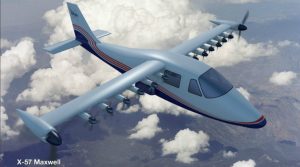 NASA (National Aeronautics and Space Administration) has launched its 1st all-electric experimental aircraft named the X-57 “Maxwell”. It is NASA’s 1st crewed X-plane (experimental plane) in nearly 2 decades adapted from Italian Tecnam P2006T aircraft. The first delivery of the all-electric experimental aircraft was taken from Empirical Systems Aerospace (ESAero) in California, United States(US). The aircraft is expected to be operational by late 2020. NASA (National Aeronautics and Space Administration) has launched its 1st all-electric experimental aircraft named the X-57 “Maxwell”. It is NASA’s 1st crewed X-plane (experimental plane) in nearly 2 decades adapted from Italian Tecnam P2006T aircraft. The first delivery of the all-electric experimental aircraft was taken from Empirical Systems Aerospace (ESAero) in California, United States(US). The aircraft is expected to be operational by late 2020. |
| Source: The Livemint |
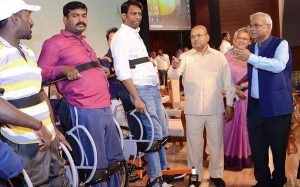 Indian Institute of Technology-Madras, in collaboration with Phoenix Medical Systems, launched the country’s first indigenously-designed standing wheelchair. wheelchair named “Arise”, was designed and developed by the TTK Centre for Rehabilitation Research and Device Development (R2D2), headed by Sujatha Srinivasan, a professor in the Department of Mechanical Engineering at IIT-Madras. The wheelchair is priced at Rs 15,000. The assistive device helps the wheelchair-bound move from a sitting to standing position, and vice-versa, independently. Indian Institute of Technology-Madras, in collaboration with Phoenix Medical Systems, launched the country’s first indigenously-designed standing wheelchair. wheelchair named “Arise”, was designed and developed by the TTK Centre for Rehabilitation Research and Device Development (R2D2), headed by Sujatha Srinivasan, a professor in the Department of Mechanical Engineering at IIT-Madras. The wheelchair is priced at Rs 15,000. The assistive device helps the wheelchair-bound move from a sitting to standing position, and vice-versa, independently. |
| Source: The Hindu |
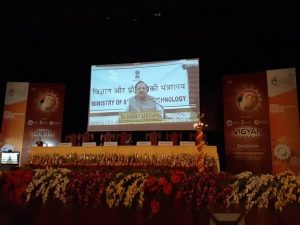 Union Minister of Science & Technology and Minister of Earth Science has inaugurated India’s 1-ever multi-venue Mega science exhibition, ‘Vigyan Samagam 2019’, in Kolkata, West Bengal. The exhibition organized by Department of Atomic Energy (DAE), Department of Science and Technology (DST), and the National Council of Science Museums(NCSM), Ministry of Culture, the exhibition will be open till December 31, 2019 for public display and will showcase the world from micro to macro, unveiling the efforts of the international community in understanding the Universe. Union Minister of Science & Technology and Minister of Earth Science has inaugurated India’s 1-ever multi-venue Mega science exhibition, ‘Vigyan Samagam 2019’, in Kolkata, West Bengal. The exhibition organized by Department of Atomic Energy (DAE), Department of Science and Technology (DST), and the National Council of Science Museums(NCSM), Ministry of Culture, the exhibition will be open till December 31, 2019 for public display and will showcase the world from micro to macro, unveiling the efforts of the international community in understanding the Universe. |
| Source: The Press Information Bureau |
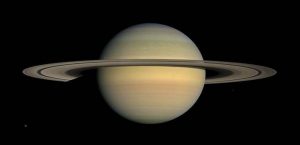 A team of astronomers has discovered a haul of 20 new moons orbiting the ringed planet, Saturn. This discovery has brought its total to 82 moons, while Jupiter, by contrast, has 79 natural satellites. The moons were discovered using the Subaru telescope on Maunakea, Hawaii. Each of the newly discovered objects in orbit around Saturn is about 5 km in diameter and 17 of them orbit the planet “backwards” i.e. retrograde direction. The other three moons orbit in a prograde direction i.e. the same direction as Saturn rotates. Dr Scott Sheppard of the Carnegie Institution for Science in Washington DC led the team of astronomers including David Jewitt of University of California, Los Angeles (UCLA), and Jan Kleyna of the University of Hawaii. A team of astronomers has discovered a haul of 20 new moons orbiting the ringed planet, Saturn. This discovery has brought its total to 82 moons, while Jupiter, by contrast, has 79 natural satellites. The moons were discovered using the Subaru telescope on Maunakea, Hawaii. Each of the newly discovered objects in orbit around Saturn is about 5 km in diameter and 17 of them orbit the planet “backwards” i.e. retrograde direction. The other three moons orbit in a prograde direction i.e. the same direction as Saturn rotates. Dr Scott Sheppard of the Carnegie Institution for Science in Washington DC led the team of astronomers including David Jewitt of University of California, Los Angeles (UCLA), and Jan Kleyna of the University of Hawaii. |
| Source: The BBC |
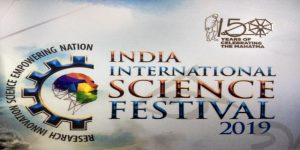 The 5th edition of India International Science Festival (IISF) will be held in Kolkata from November 5-8. IISF is the largest science festival in the world. The focus will be on youth to inspire and motivate them to learn real science in motion. The theme for this year’s festival is ‘RISEN India – Research, Innovation, and Science Empowering the Nation’. The Department of Science & Technology (DST), Department of Biotechnology, Council for Scientific and Industrial Research (CSIR), Indian Council of Medical Research and the Ministry of Earth Sciences are major government sponsoring bodies for the event. The IISF will also host 28 different events such as Agriculture Scientists’ Meet, Vigyan Samagam, Young Scientists Conference, Vigyanika-International Science Literature Festival, International Science Film Festival of India. The 5th edition of India International Science Festival (IISF) will be held in Kolkata from November 5-8. IISF is the largest science festival in the world. The focus will be on youth to inspire and motivate them to learn real science in motion. The theme for this year’s festival is ‘RISEN India – Research, Innovation, and Science Empowering the Nation’. The Department of Science & Technology (DST), Department of Biotechnology, Council for Scientific and Industrial Research (CSIR), Indian Council of Medical Research and the Ministry of Earth Sciences are major government sponsoring bodies for the event. The IISF will also host 28 different events such as Agriculture Scientists’ Meet, Vigyan Samagam, Young Scientists Conference, Vigyanika-International Science Literature Festival, International Science Film Festival of India. |
| Source: The Hindustan Times |
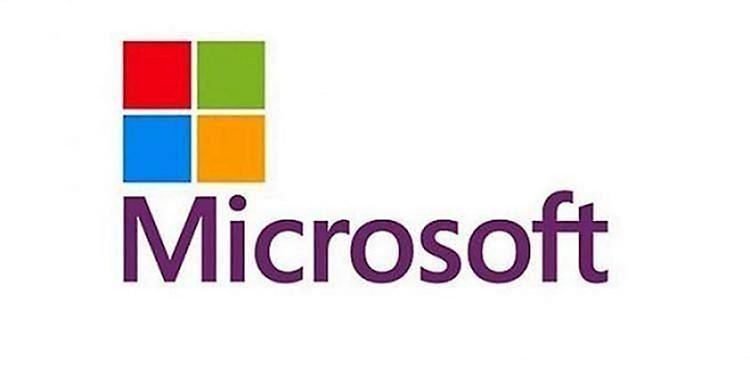 Microsoft India launched a program under which it will train 5000 government employees over the next year on AI (artificial intelligence) and cloud computing skills. This program was inaugurated by Amitabh Kant, chief executive of NITI Aayog. The program, called ‘Digital Governance Tech Tour’, will comprise of physical and virtual workshops. The program will be open for technocrats and IT professionals across the government, including employees of Public Sector Undertakings (PSUs). Microsoft India launched a program under which it will train 5000 government employees over the next year on AI (artificial intelligence) and cloud computing skills. This program was inaugurated by Amitabh Kant, chief executive of NITI Aayog. The program, called ‘Digital Governance Tech Tour’, will comprise of physical and virtual workshops. The program will be open for technocrats and IT professionals across the government, including employees of Public Sector Undertakings (PSUs). |
| Source: The Economics Times |
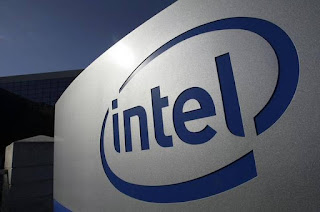 Intel Corp launched its latest processor, it’s first using artificial intelligence (AI), designed for large computing centres. The chip developed at its development facility in Haifa, Israel. The name of the chip is Nervana NNP-I or Springhill and it is based on a 10 nanometre Ice Lake processorthat will allow it to cope with high workloads using minimal amounts of energy. Intel Corp launched its latest processor, it’s first using artificial intelligence (AI), designed for large computing centres. The chip developed at its development facility in Haifa, Israel. The name of the chip is Nervana NNP-I or Springhill and it is based on a 10 nanometre Ice Lake processorthat will allow it to cope with high workloads using minimal amounts of energy. |
| Source: The Hindu |
You need to login to perform this action.
You will be redirected in
3 sec
